June 24 St. Marks & Doge’s Palace (Day 271)
We ventured out amongst all the other tourists to visit THE main attractions of Venice, St. Mark’s Square with St. Marks Basilica and the Doge Palace. We had purchased ‘skip the line tickets’ online, but still had a line, albeit a shorter one than the ‘common’ tourists! The ticket to Basilica San Marco was for a quick walk through the main area, but it was crammed with fantastic artwork and especially intricate mosaics! Click here for all things Basilica San Marco, history and chronology especially!

The floor mosaics appear 3 dimensional!
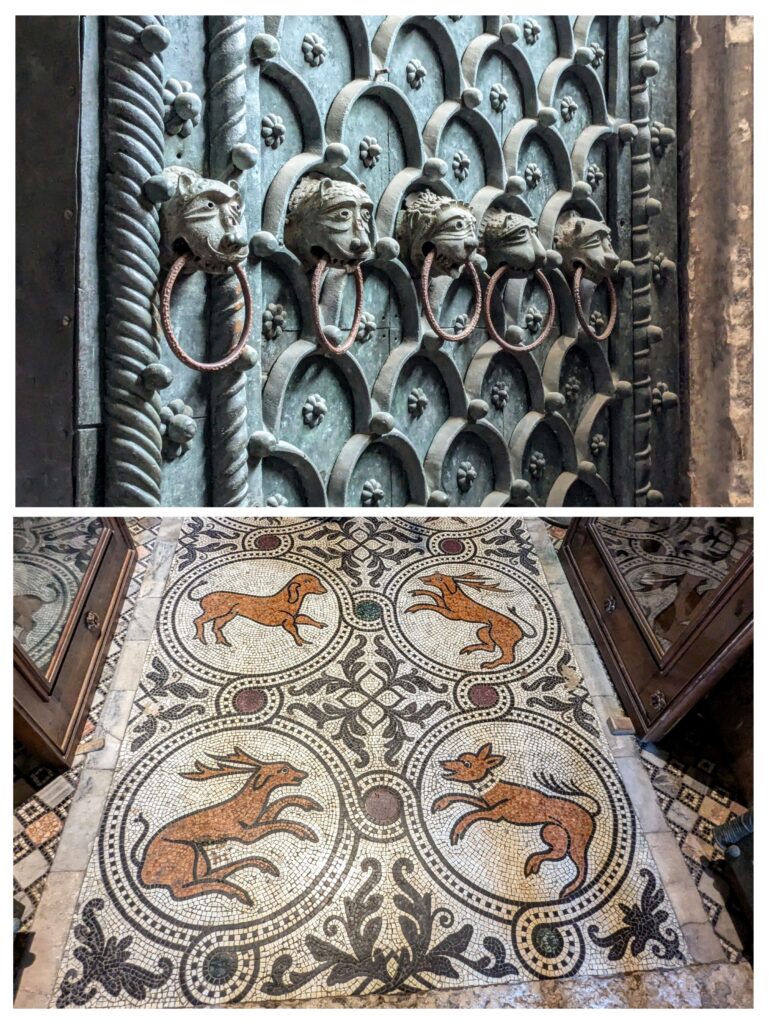
The animal motifs caught my eye of course!
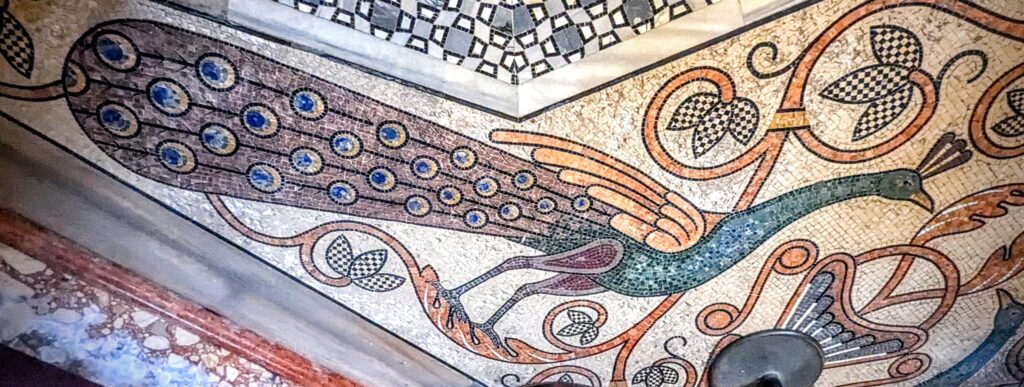
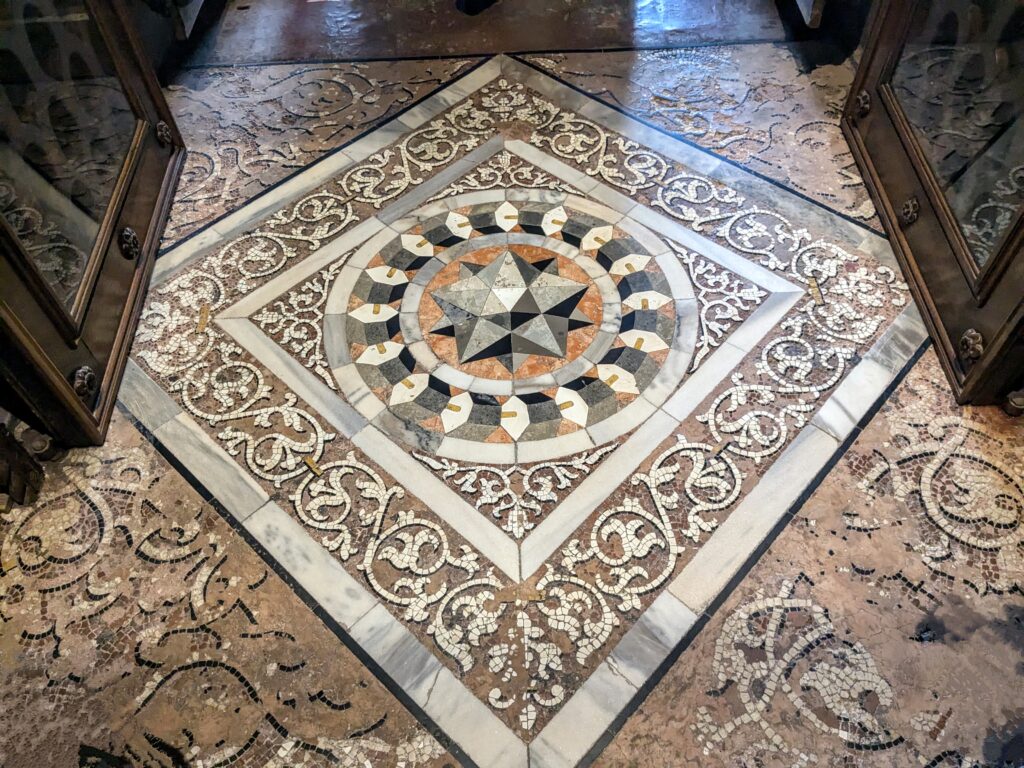
The mosaics covering the floors walls and ceilings show 8 centuries of development!
Robert and I continued on to visit the Doge’s Palace, Palazzo Ducale, the seat of government, “La Serenissima”, of Venice during it’s dominance of the Mediterranean and especially the Adriatic from the 6th to the 16th centuries A.D. Over 1000 years! The Doge was the elected supreme authority of the Venice Republic, elected by the ruling families of the city-state, not the common people! While the Basilica is older and covered with mosaics, the Palace was built in 1340 (on the site of former palaces) and has a ‘Venetian Gothic’ style, more paintings and elaborate plasterwork. Not only was it the Doge’s residence, but it held the chambers for the various government entities that ruled the far flung empire. For all information, history, etc. about Palazzo Ducale, click here.
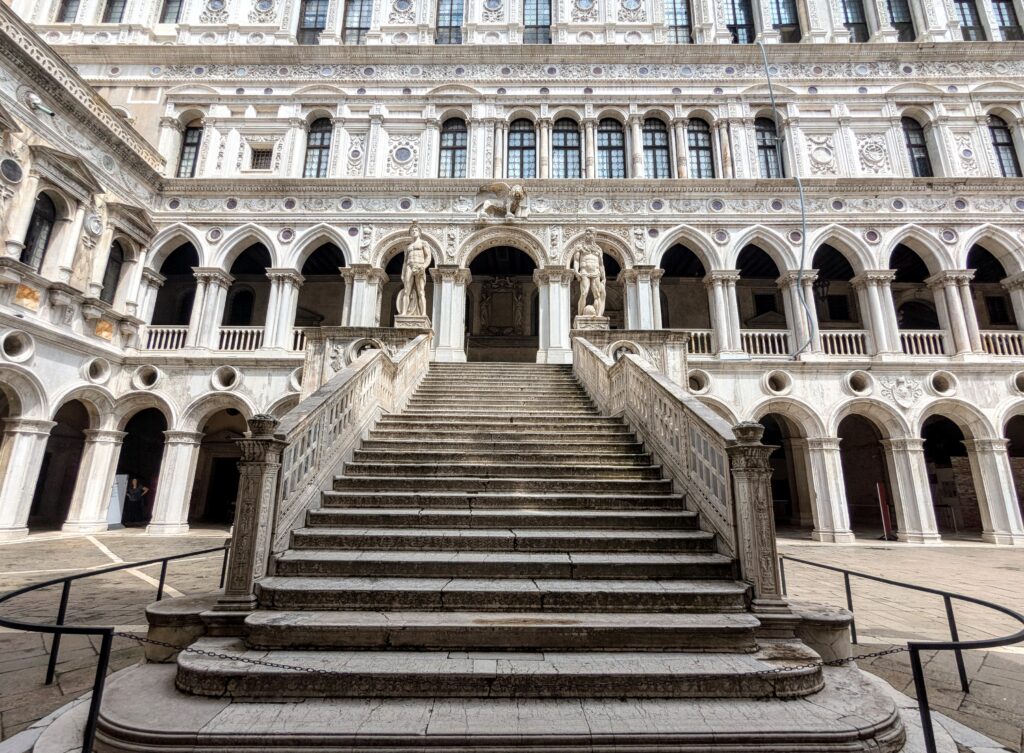
In the courtyard of the Palace is the ‘Giant’s Staircase’, guarded at the top by statues of Mars and Neptune, symbolizing Venice’s dominance on land and sea! This is where newly elected Doges were crowned and presented to the people of Venice.
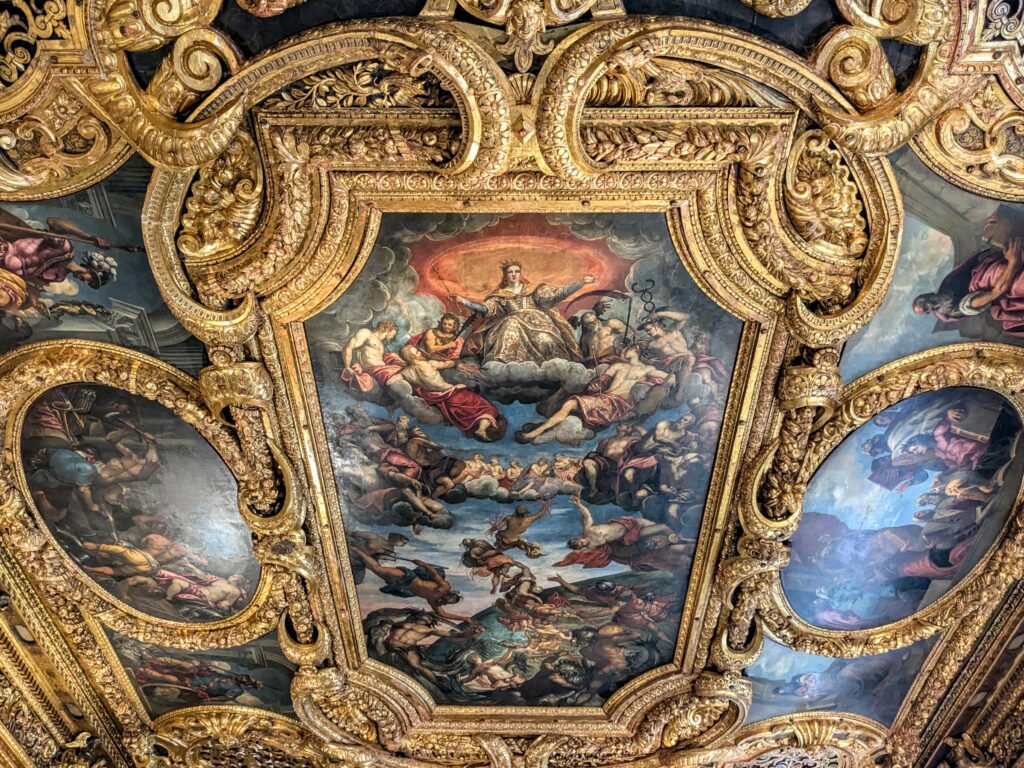
Inside, the tour passes through room after elaborately painted room, the halls of government. Lots of paintings mixing religious and royal symbolism.
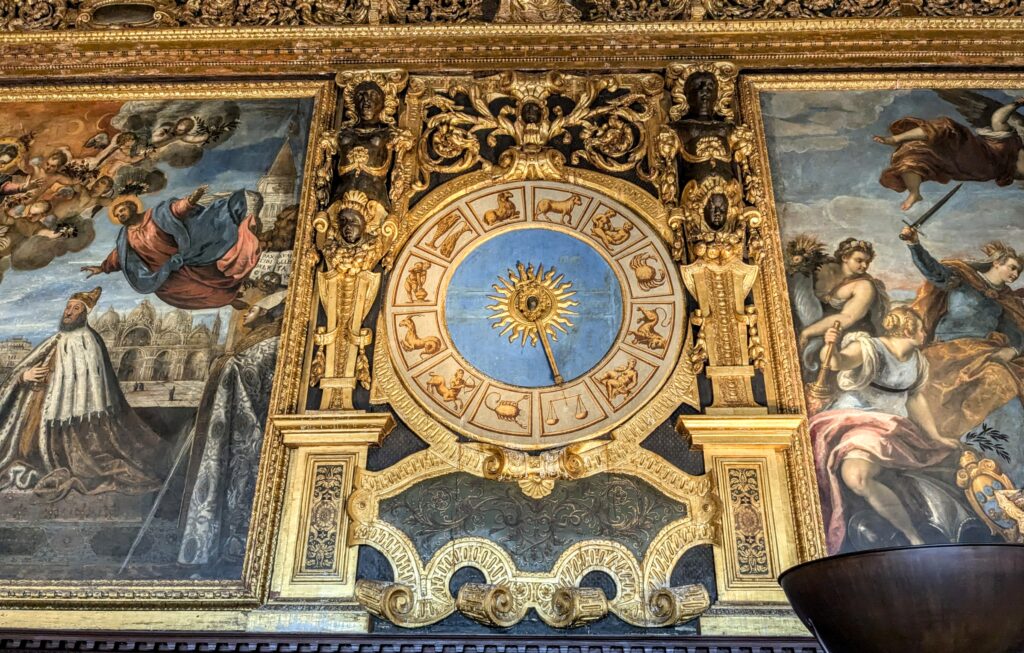
I was surprised to see astrological references too!
One room in particular held ‘The Council of Ten’, “set up after a conspiricy…to overthrow the institutions of the State. Initially meant as a provisional body to try those conspirators, the Council of Ten…ended up becoming permanent. Its authority covered all sectors of public life – from religious orthodoxy to foreign policy, from espionage to state security – and this range of powers gave rise to the legend of the Council as a ruthless, all-seeing tribunal at the service of the ruling oligarchy, a court whose sentences were handed down rapidly after hearings held in secret.” Lessons should be learned from this!!! After leaving the Judicial chambers the tour sends you down to the prison, through the ‘Bridge of Sighs’ where the convicted got their last look through the stone latticed window of the outside world. The dank, dark cells below saw many prisoners, political and economic, rightly or wrongly convicted, languish and die.

In one gallery is this picture, the last Doge.
“On May 12, 1797, with Napoleon’s troops lined up for an attack on the shores of the lagoon, the Great Council of Venice met for the last time and abdicated in favour of a revolutionary government controlled by the French military command. On May 15, 1797, the last doge Ludovico Manin left the Palazzo Ducale forever. That was how the thousand-year-old history of the Republic of Venice ended.”
Beware; We don’t have an army on our shores, but an army in our midst (including the Supreme Court) threatening to end our not even 250 year old American Republic!!
